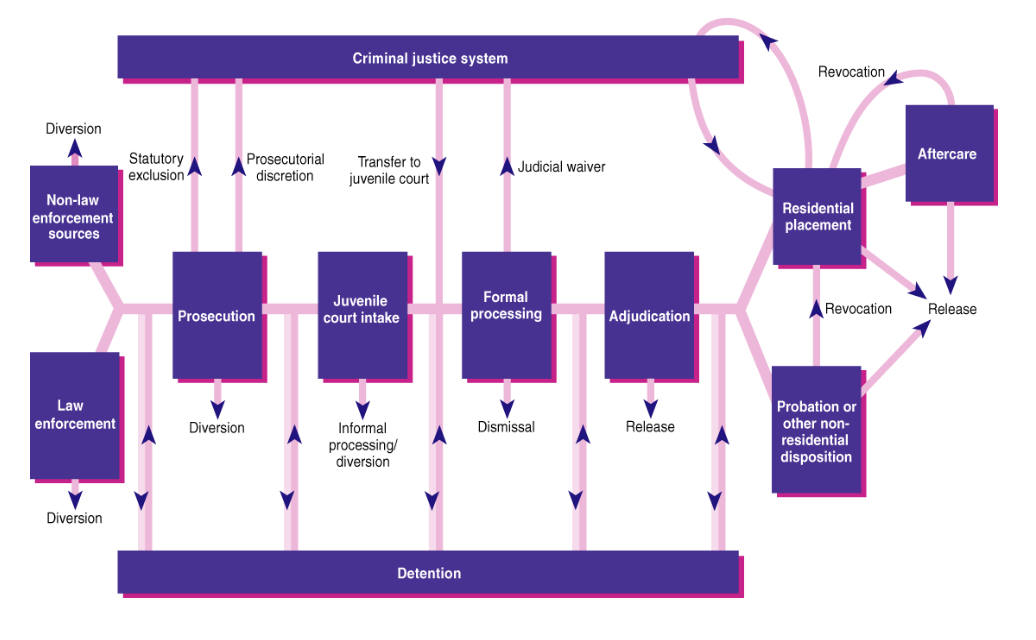9.10. The Structure of the Juvenile Justice System
Alison S. Burke and Kate McLean
The juvenile justice process involves seven major decision points: (1) arrest or intake, (2) referral to court, (3) secure detention, (4) waiver to adult criminal court, (5) case petitioning, (6) delinquency finding/adjudication, (7) disposition (including probation, or confinement in a secure correctional facility). [1]
The majority of cases are first referred to the juvenile justice system through contact with police. Probation officers, school officials, or parents usually refer the remaining cases. The most common offenses referred to court are property offenses, followed by person offenses, drugs offenses, and general delinquency charges.
At the intake stage, probation officers or attorneys determine whether or not the case needs the attention of the juvenile court or if it can be handled informally, through diversion. If the case progresses to court, the authorities need to determine if the youth can be released to a parent/guardian or if the youth needs to be held in a secure detention center. When determining this, the court needs to assess the risk the youth poses to society and if the youth poses a flight risk. In some cases, the parent cannot be located or, if located, refuses to take custody of the youth. In these cases, the juvenile is remanded to custody. The decision to detain or release the juvenile will be made by the judge at a detention hearing.
If the case is handled in court, the county attorney needs to file a petition. When the youth has a formal hearing, it is called an adjudication rather than a trial in adult court. The adjudication of youth as delinquent can result in dismissal of the charges, probation, or confinement at a secure institution. In most juvenile cases, the least restrictive option is usually sought, so the youth is usually put on probation or some sort of community treatment. Formal processing is less common than informal processing involving diversion or community-based programming.

- Sickmund, M., & Puzzanchera, C. (2014). Juvenile offenders and victims: 2014 national report. ↵

